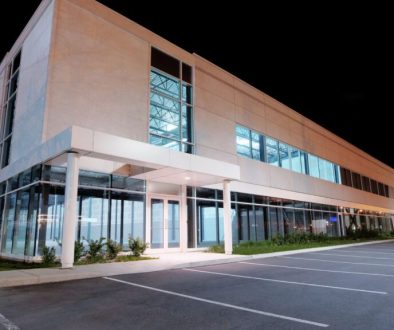How to Identify Undervalued Commercial Properties
How to Identify Undervalued Commercial Properties
Identifying undervalued commercial properties is crucial for investors seeking profitable real estate opportunities. This comprehensive guide will delve into the strategies and techniques you can use to spot properties that are priced below their true market value. By understanding the market dynamics, using analytical tools, and recognizing signs of potential, you can enhance your investment portfolio significantly. We’ll cover actionable tips, relevant metrics, and the importance of thorough research to make informed decisions that can lead to substantial returns.
Introduction
The commercial real estate market is vast and complex, with numerous factors influencing property valuations. Investors are constantly on the lookout for undervalued properties as these opportunities can lead to high returns. However, identifying such properties requires a keen eye, solid research, and an understanding of market trends. This article will guide you through the processes of identifying undervalued commercial properties, providing you with the tools necessary to navigate this competitive landscape successfully. From understanding valuation methods to analyzing market conditions, we will cover all the essential elements that contribute to making sound investment decisions.
Understanding Property Valuation
- The first step in identifying undervalued commercial properties is understanding the different valuation methods available. Common approaches include asset-based, income-based, and market-based valuations.
- Asset-based valuation focuses on the value of the property itself, considering its physical attributes, location, and condition. Income-based valuation, on the other hand, assesses the property’s income-generating potential, factoring in rental income and operational costs.
- Market-based valuation examines comparable sales in the area to determine what similar properties are selling for. By comparing these methods, you can gain a comprehensive understanding of a property’s fair market value.
For example, if you’re eyeing an office building, assess its historical rental income against similar properties in the area. If the property is generating less income than its peers, it may indicate an opportunity to negotiate a lower purchase price.
Analyzing Market Conditions
- Market conditions play a pivotal role in property valuation and are crucial in identifying undervalued properties. Understanding local market trends, including supply and demand dynamics, vacancy rates, and economic indicators, allows investors to gauge property prices more accurately.
- Keep an eye on economic shifts—job growth, population increases, and infrastructure developments can significantly influence property values. For example, a new highway development may enhance accessibility and attract businesses, increasing property values in the vicinity.
- Additionally, tools like the Commercial Real Estate Price Index (CREPI) and local real estate reports provide valuable insights into market trends. Analyzing these resources can help you identify areas where property prices may not yet reflect the underlying value due to market lag.
An anecdote to illustrate this point is the revitalization of downtown areas in many cities. Properties in these locations often start at lower prices but can appreciate rapidly as the area becomes more desirable.
Identifying Signs of Undervaluation
- Certain indicators can signal that a commercial property may be undervalued. One key sign is a property that has been on the market for an extended period without any offers. This can suggest that the price may be too high, or there are underlying issues deterring buyers.
- Additionally, properties owned by motivated sellers, such as financial institutions or distressed owners, may represent unique opportunities. These sellers may be willing to accept lower offers to offload their assets quickly.
- Another indicator is the comparison of a property’s asking price against its historical performance. If recent income reports show a decline, but the area has strong growth potential, this discrepancy could highlight an undervalued investment opportunity.
Engaging with the local real estate community can also provide invaluable insights. Networking with brokers, attending property auctions, and exploring investment clubs can help you discover off-market deals or properties that may not be receiving the attention they deserve.
Using Financial Metrics
- Financial metrics are essential for evaluating potential investments in commercial real estate. Key figures to consider include the Cap Rate, Cash on Cash Return, and Internal Rate of Return (IRR).
- The Cap Rate, calculated by dividing the net operating income (NOI) by the purchase price, helps assess the property’s profitability relative to its cost. A higher Cap Rate often indicates a better return on investment.
- Cash on Cash Return focuses specifically on the cash income generated by the property relative to the cash invested. This metric is particularly useful for identifying properties that can generate immediate cash flow.
- IRR determines the annualized rate of return expected over the duration of an investment. This metric is vital for long-term investors evaluating the potential growth of their investment.
For instance, if you find a property with a high Cap Rate compared to similar properties in the area, this could indicate that it’s priced lower than it should be, representing an investment opportunity.
Conducting Thorough Due Diligence
- Conducting thorough due diligence is crucial when identifying undervalued commercial properties. This process should include a comprehensive review of the property’s financials, physical condition, and local market dynamics.
- Start by analyzing the property’s financial statements, leases, and operational reports. Understanding the current leasing arrangements and tenant history can provide insights into potential revenue streams and risks.
- Next, perform a physical inspection of the property. Look for any necessary repairs or renovations that could affect the property value. These assessments can help you negotiate a better purchase price if repairs are needed.
- Additionally, consider hiring professional appraisers or real estate consultants to obtain unbiased opinions on the property’s value. Their expertise can be invaluable in ensuring you make informed investment decisions.
As a practical tip, creating a checklist for due diligence can streamline the process. Include items such as property inspections, lease reviews, and market analysis to ensure no critical aspect is overlooked.
Leveraging Technology and Tools
- In today’s digital age, leveraging technology can greatly enhance your ability to identify undervalued commercial properties. Various online tools and platforms provide valuable data and analytics to help you make informed decisions.
- Utilize real estate investment software to analyze potential acquisitions, run financial models, and track market trends. Tools like CoStar and LoopNet offer extensive databases of commercial properties, enabling you to compare listings and identify undervalued options.
- Geographic Information Systems (GIS) can also aid in visualizing market trends and property values. By layering data on maps, you can identify high-growth areas and assess potential investment opportunities.
- Additionally, consider utilizing big data analytics tools to analyze consumer behavior, demographic shifts, and economic forecasts. Accessing this information can give you a competitive edge in identifying undervalued assets.
By integrating technology into your investment strategy, you can enhance your research capabilities and make more informed decisions regarding undervalued properties.
Building Relationships with Local Brokers
- Establishing relationships with local real estate brokers can provide access to exclusive listings and valuable market insights. Brokers often have firsthand knowledge of properties that may be undervalued or about to enter the market.
- Engage with brokers who specialize in commercial real estate to better understand the nuances of the local market. They can provide insights into market trends, property valuations, and investment opportunities that may not be publicly available.
- Consider attending local real estate networking events, workshops, or seminars to connect with brokers and other investors. Building a strong network can lead to valuable partnerships and insights that can drive your investment strategy.
Brokers can also assist in negotiating deals and providing guidance throughout the purchasing process, ensuring that you secure the best possible investment.
Understanding Economic Indicators
- Economic indicators play a crucial role in determining property values and identifying undervalued commercial properties. By keeping abreast of key indicators such as GDP growth, employment rates, and inflation, you can better gauge the overall health of the market.
- For instance, a burgeoning job market typically correlates with increased demand for commercial space. Conversely, high vacancy rates and stagnant job growth may signal an oversupply of properties, presenting opportunities for savvy investors.
- Following local news, economic reports, and real estate publications can help you stay informed about current trends and potential investment opportunities.
Utilizing this knowledge, you can strategically invest during market downturns or capitalize on emerging trends, positioning yourself to identify undervalued properties effectively.
Conclusion
In summary, identifying undervalued commercial properties requires a combination of understanding property valuation, analyzing market conditions, recognizing signs of undervaluation, utilizing financial metrics, and conducting thorough due diligence. By leveraging technology and building relationships with local brokers while keeping an eye on economic indicators, you can enhance your investment strategy and uncover profitable opportunities in the commercial real estate market. The significance of identifying undervalued properties cannot be overstated, as these investments can yield substantial financial returns and contribute to building a robust portfolio. As you embark on your journey to identify undervalued commercial properties, remember to remain patient, do your research, and be prepared to seize opportunities when they arise. Start your journey today and explore our listings to find your next great investment!



